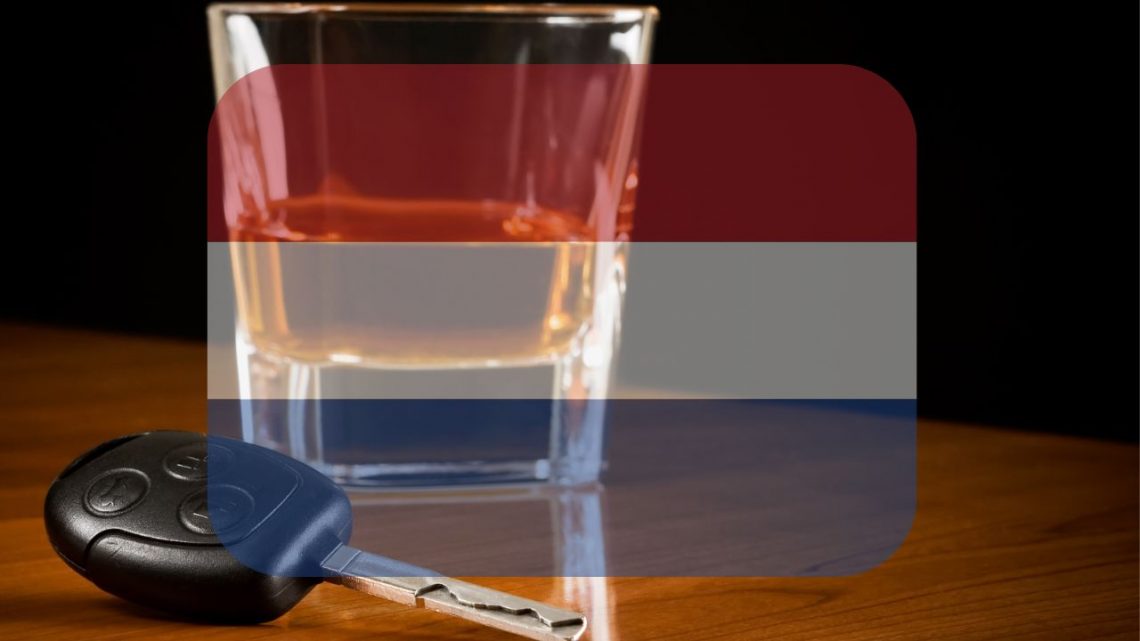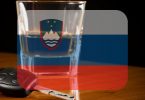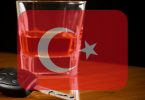In the Netherlands, the legal limit for blood alcohol concentration (BAC) while driving is set at 0.05%, equivalent to 50 milligrams of alcohol per 100 milliliters of blood.
The purpose of this site is to educate visitors and enhance their understanding of the hazards associated with driving under the influence in the Netherlands. It is important to emphasize that the information provided on this site does not support or encourage operating a vehicle while intoxicated in any country or region.
What is the legal alcohol limit for driving in the Netherlands?
In the Netherlands, the legal alcohol limit for drivers is determined by both the duration of their driving experience and their age, especially for those operating specific types of vehicles. These regulations are designed to promote road safety by ensuring drivers are not impaired by alcohol. Below is a breakdown of the legal blood alcohol concentration (BAC) limits for different categories of drivers:
- Regular Drivers:
- The legal BAC limit is 0.05%, which equates to 50 milligrams of alcohol per 100 milliliters of blood.
- Drivers with Less Than Five Years of Experience:
- A stricter BAC limit of 0.02% is enforced to encourage responsible driving habits among new drivers.
- Drivers Under 24 Operating Mopeds, Motorised Bicycles, and Scooters:
- These individuals are also subject to the lower BAC limit of 0.02%, reflecting the increased risk associated with inexperienced and younger drivers.
Drink and Drive Penalties and Punishments in the Netherlands
Driving under the influence of alcohol is a serious offense in the Netherlands, with the government imposing strict penalties to curb this dangerous behavior. While pedestrians are not subject to a legal alcohol limit, they can still be reported for public intoxication based on observed physical and behavioral signs of drunkenness by the police.
For Drivers:
Drivers caught under the influence face severe consequences, which can include:
- Fines: Monetary penalties depend on the blood alcohol content (BAC) level at the time of the offense.
- Suspension of Driving License: Temporary revocation of driving privileges.
- Educational Measures: Mandatory participation in courses designed to highlight the risks of mixing alcohol and driving.
- Examination of Fitness to Drive: Evaluation to determine if the offender is capable of driving safely in the future.
Offenders often undergo two types of procedures:
- Criminal Procedure: Imposes penalties according to the law for the purpose of punishment.
- Administrative Procedure: Conducted by the CBR (the Dutch driving licence authority), focusing on prevention and determining future driving capability.
Sanctions Based on BAC Level:
- Standard Drivers (0.5g/l limit) and Novice/Light-Moped Riders (0.2g/l limit):
- Fines range from €325 to a minimum of €950, increasing with the BAC level.
- Rehabilitation courses, such as LEMA (Light Educational Measure Alcohol) or EMA (Educational Measure Alcohol), may be imposed.
- Driving bans can vary from 2 to 12 months, depending on the BAC level, with more severe cases potentially facing community service or a requirement to pass theoretical and practical exams again.
Rehabilitation Courses:
- LEMA: A short course spread over two sessions, focusing on the dangers of alcohol in traffic.
- EMA: A more extensive program over seven weeks, including personal meetings with trainers to discuss alcohol and driving.
Recidivism leads to higher fines, longer driving bans, and, for BAC levels above 1.3g/l for the second offense, revocation of the driving license.
Important Reminder:
Laws and penalties regarding drink-driving are subject to change. It’s crucial for residents and visitors to regularly check the official state website for the most current information. This proactive approach ensures awareness of the latest regulations and penalties, promoting safer driving practices for everyone on the road.
How can I calculate if my alcohol blood limit is legal in Netherlands
In the Netherlands, the police determine if a driver is over the legal alcohol limit primarily through breathalyzer tests and, in some cases, blood tests. These tests measure the blood alcohol concentration (BAC) to ensure drivers comply with the legal limit of 0.05% for experienced drivers and 0.02% for novice drivers and young moped riders.
As an ex-phlebologist with a decade of experience, I recommend two reliable ways to check your BAC level, helping you make informed decisions about driving after consuming alcohol.
1. Use a High-Quality Alcohol Breathalyzer
Investing in a high-quality alcohol breathalyzer is a practical step towards responsible driving. The BACtrack S80 is one of the most accurate devices available in the Netherlands. It boasts Professional-Grade Accuracy and is DOT & NHTSA Approved, in addition to being FDA 510(k) Cleared. Keeping a BACtrack S80 in your vehicle is a wise choice, as it provides a quick and reliable method to assess your alcohol levels, helping you avoid impaired driving.
2. Utilize a BAC Calculator
For a more accessible option, I collaborated with fellow phlebologists and web developers to create a BAC calculator. This online tool is designed to estimate your blood alcohol content based on the alcohol you’ve consumed, your weight, and the time elapsed since your first drink. It’s a useful resource for getting a rough estimate of your BAC, especially when a breathalyzer isn’t available.
It’s crucial to remember that neither method guarantees 100% accuracy. Factors such as metabolism, food intake, and individual health conditions can affect BAC readings. However, these tools provide valuable insights and can be instrumental in preventing drunk driving by offering an estimate of your alcohol levels. If your BAC is close to or above the legal limit, it’s safest to avoid driving.
The aim is to ensure that you remain within legal limits and contribute to safer roads in the Netherlands. Always err on the side of caution and consider alternative transportation if there’s any doubt about your sobriety.
Ways to Avoid Driving with a High BAC in the Netherlands

Driving with a high Blood Alcohol Concentration (BAC) is not only illegal but also puts you and others at risk. In the Netherlands, where the legal limits are strictly enforced, it’s important to plan ahead to ensure you’re not behind the wheel while impaired. Here are some practical tips to avoid driving with a high BAC:
1. Utilize Taxi Services or Ride-Sharing Apps
One of the easiest and most convenient ways to avoid driving after drinking is to use taxi services or ride-sharing apps. In major Dutch cities, you have several options at your fingertips:
- Uber: Available in numerous cities across the Netherlands, Uber offers a reliable and easy-to-use service to get you home safely without having to drive.
- Local Taxi Companies: For a more local touch or in areas where Uber might not be as prevalent, consider using local taxi services. In Amsterdam, Amsterdam Taxi Centrale is a reputable choice, offering professional services around the clock. In Rotterdam, Rotterdamse Taxi Centrale is known for its reliable and friendly service.
These services provide a safe and efficient way to get home, eliminating the risk of driving under the influence.
2. Opt for a Designated Driver Service
If you’ve driven to a location and find yourself unable to safely drive back due to alcohol consumption, a designated driver service is an excellent solution. These services provide a driver to take you and your car home, ensuring both you and your vehicle arrive safely without the need to leave your car behind. Some options include:
- Amsterdam Transfer Services: Available in Amsterdam, they offer reliable designated driver services to ensure you and your car get home safely.
- Executive Drivers: In Rotterdam, Executive Drivers provides a similar service, offering peace of mind for those who need to get themselves and their vehicles home after a night out.
To find a designated driver service in your city, a quick Google search for “designated driver service” followed by the name of your city will provide you with options.
The best strategy to avoid driving with a high BAC is to plan your transportation in advance. Whether it’s booking a taxi, using a ride-sharing app, or arranging for a designated driver service, ensuring you have a safe way to get home will help you enjoy your night out without putting yourself or others in danger. Always remember, when it comes to alcohol and driving, it’s better to be safe than sorry.
Sticking to Drink and Drive Laws in the Netherlands: Sad Statistics
Between 2017 and 2019, the incidence of drunk driving in the Netherlands increased by 2.3%, with serious offenses involving BAC levels of 0.08% or higher doubling from 0.5% to 1.1%. In response, the Dutch National Strategic Road Safety Plan for 2030 has introduced comprehensive measures to combat drink-driving through improved data analysis, awareness campaigns, targeted interventions for different offender groups, and enhanced collaboration with various stakeholders.
To ensure road safety, it’s vital to avoid driving after consuming alcohol. Opting for authorized taxi services, such as Uber or local taxi companies like Amsterdam Taxi Centrale and Rotterdamse Taxi, or using designated driver services can significantly reduce the risks associated with drink-driving. These precautions help protect not only the driver but also other road users.
Understanding and adhering to the local drunk driving laws are crucial for anyone visiting or living in the Netherlands. Regularly checking your BAC with a reliable alcohol breathalyzer can prevent impaired driving. For more detailed information on the Netherlands’ drunk driving regulations, visiting the official website is recommended.







